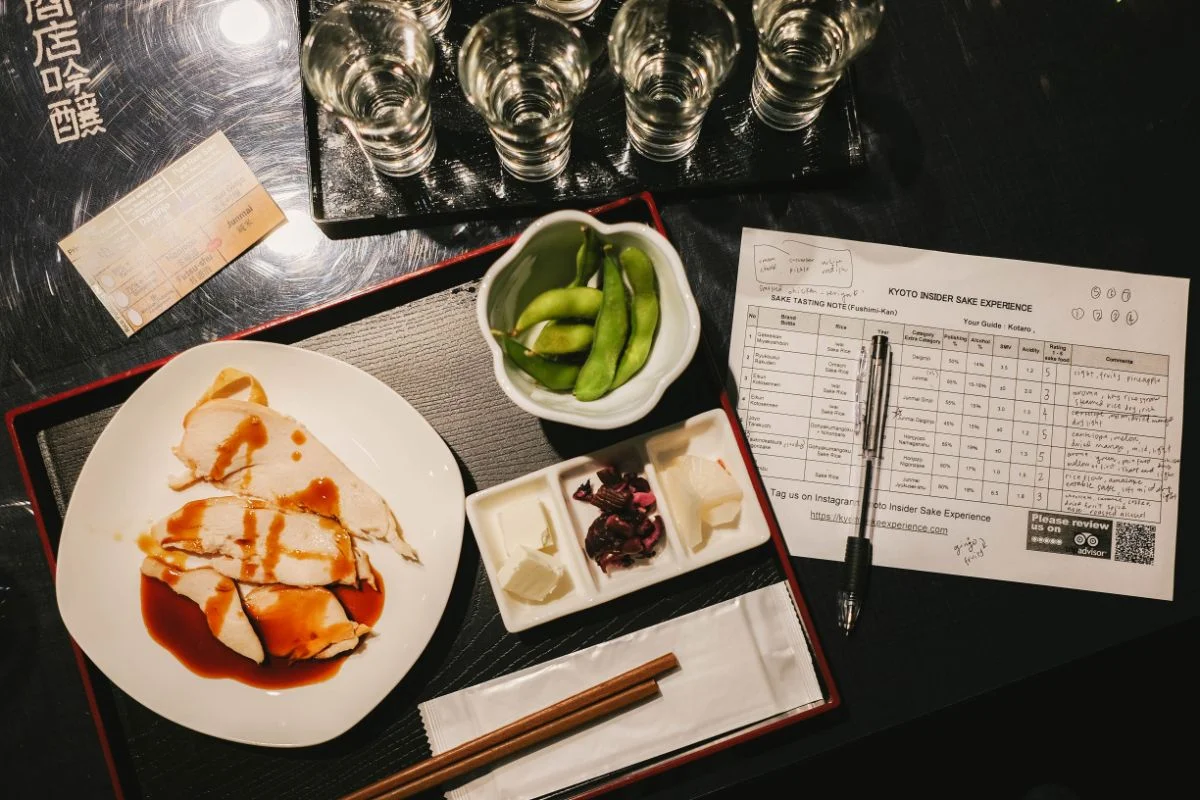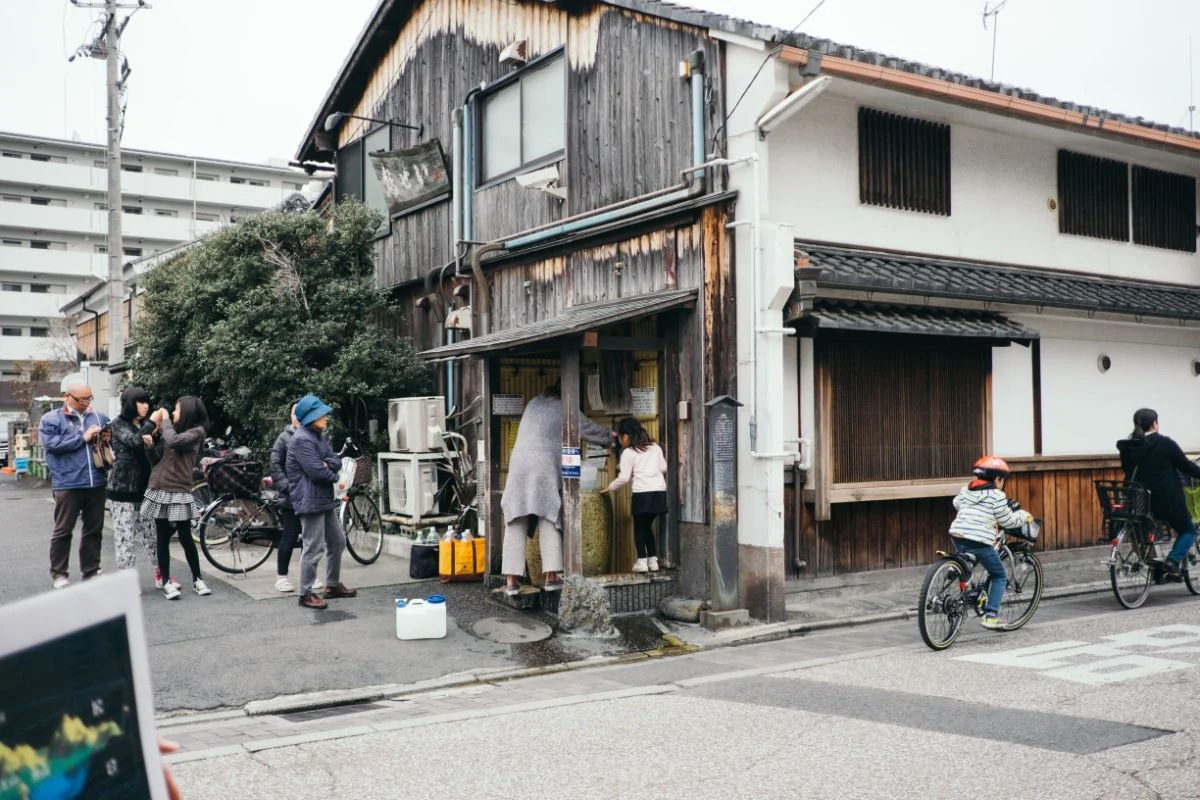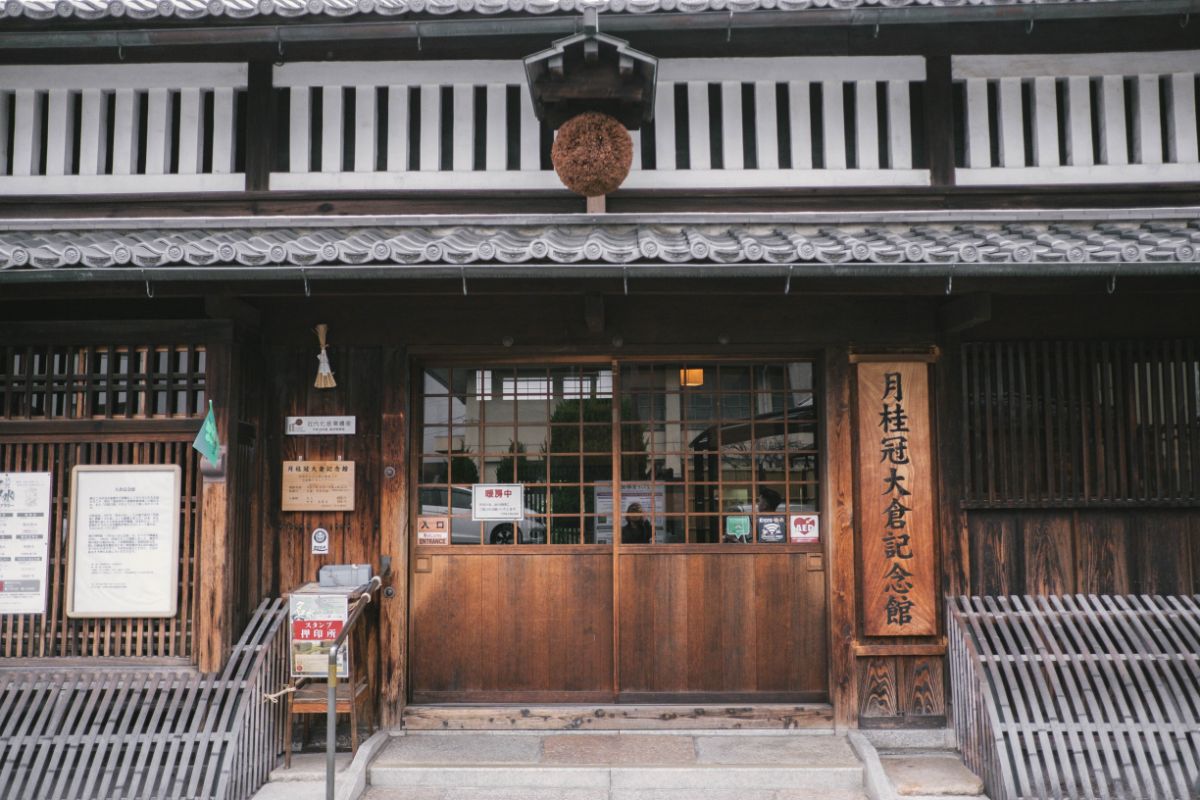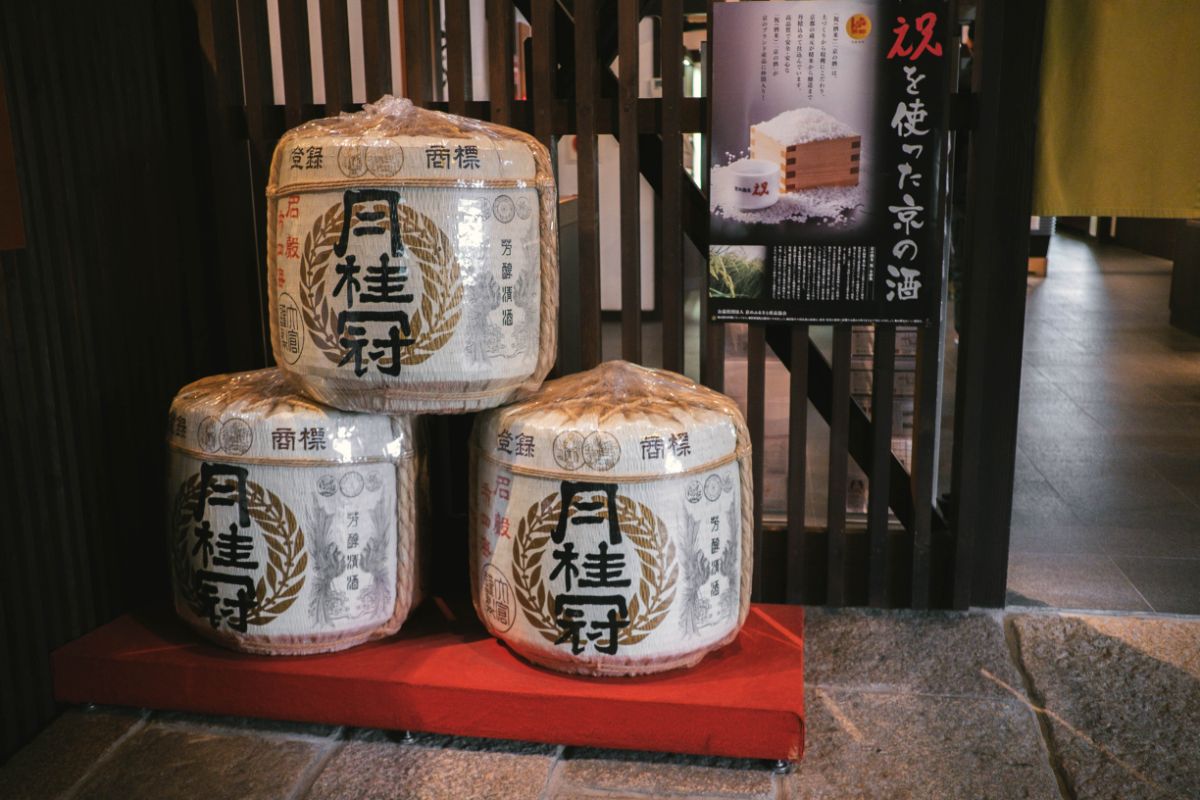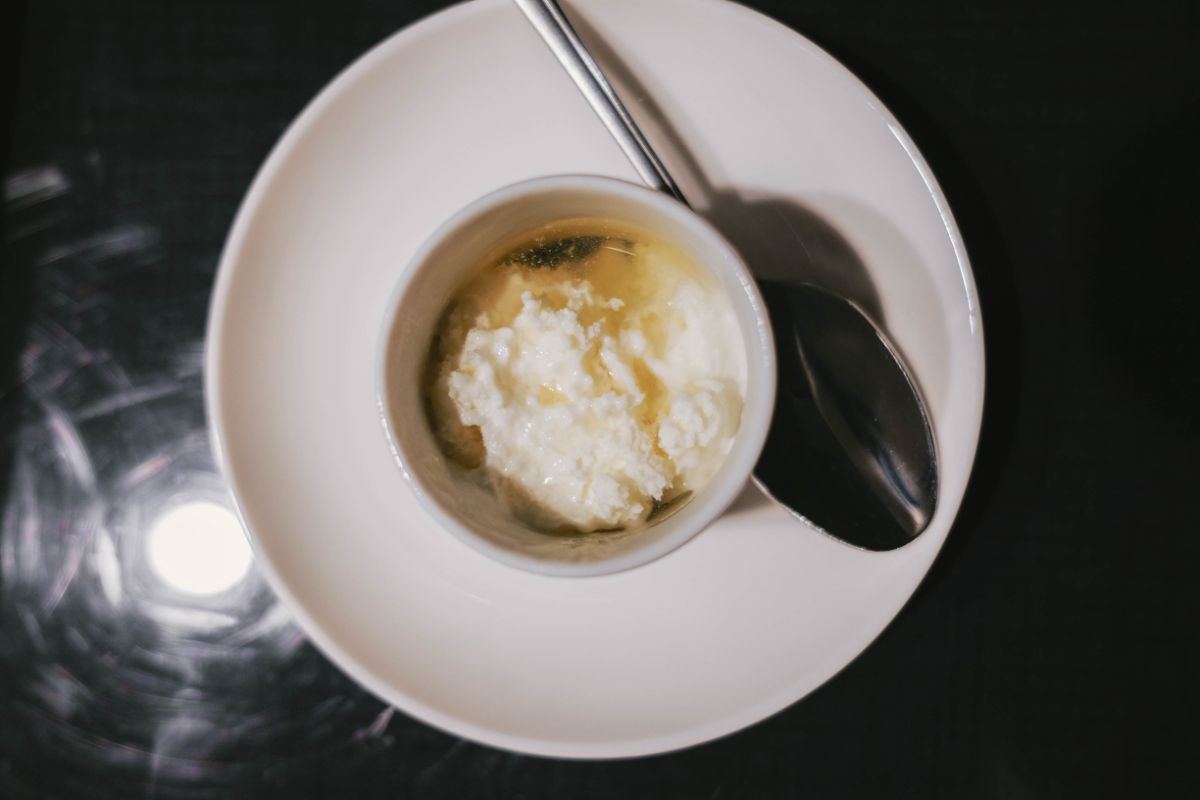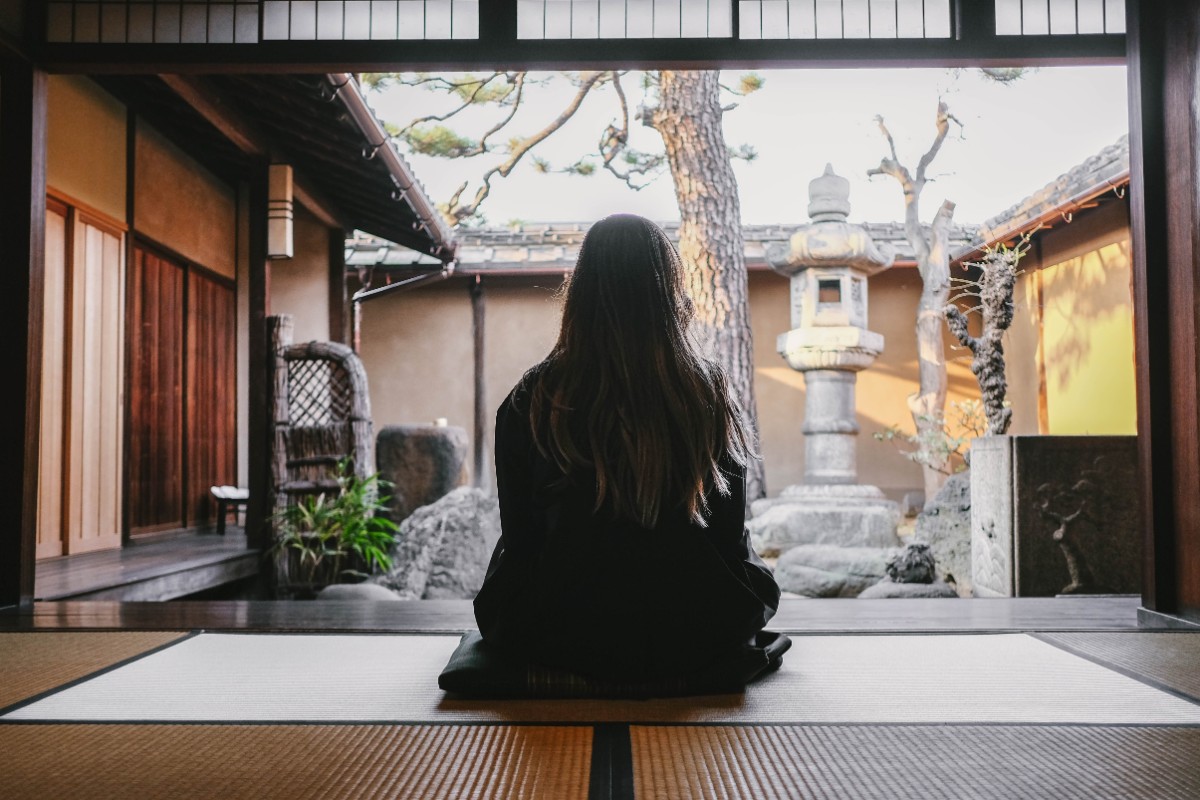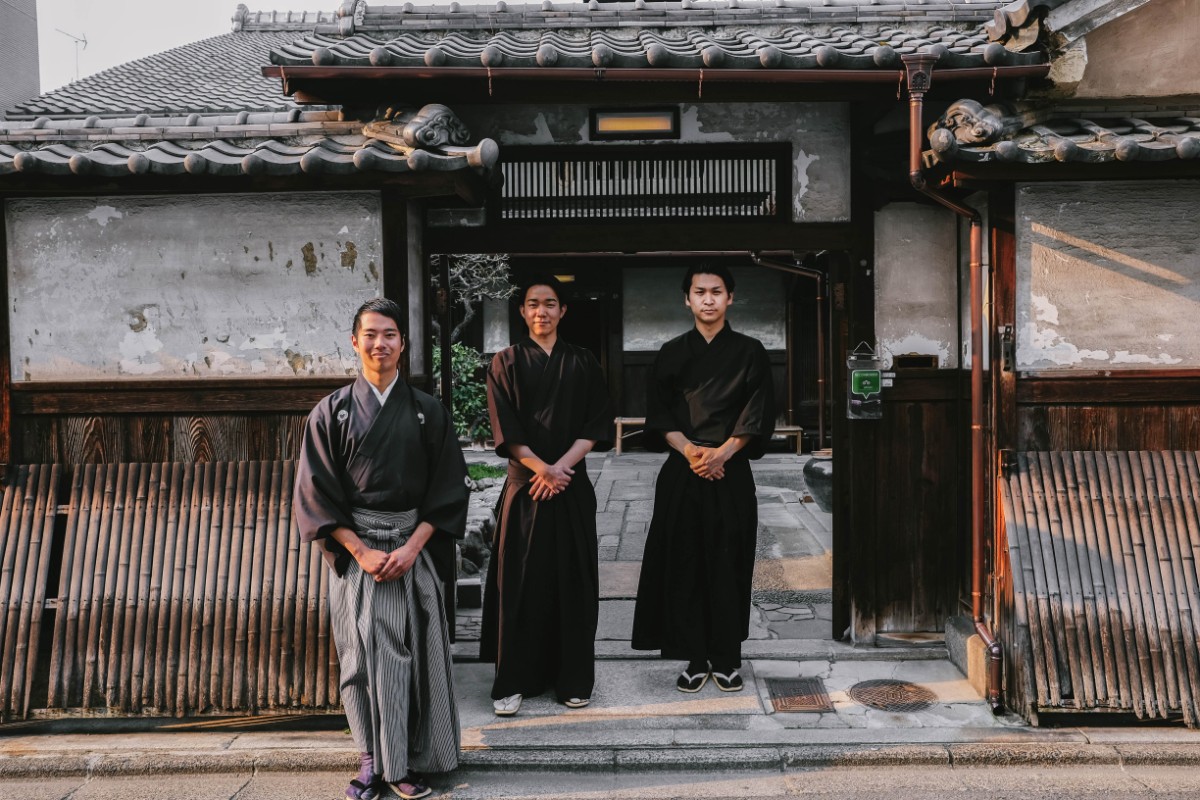Before traveling to Japan, we barely knew anything about sake. We just knew that you can order them at sushi restaurants and they come hot or cold. Little did we know, we were just scratching the surface of the world of sake.
We knew we had to experience a sake tasting while visiting Japan, it would help us navigate through the many different types and variations. Sake is an alcoholic fermented rice drink that’s served in Japanese restaurants, bars, and izakayas. Kyoto, especially the Fushimi area, was built on top of a massive well of high-quality spring water. Quality water means quality sake, so that’s why you’ll find breweries lining the streets of Fushimi.
On the second day of our trip, we booked a tasting tour with Kyoto Insider Sake Experience to level up our knowledge about the beverage. We met in front of the Fushimi Tourist Center and met our guide, Kotaro. We made our way to Gekkeikan Sake Brewery, passing spring wells and hung up sugidama cedar balls. If you see any of these cedar balls hanging in front of a brewery you know the process is complete and the sake is sufficiently aged.
The Brewery Tour
We entered a wooden building that spanned a few blocks and stepped into one of the most famous sake breweries in Japan. Our group was led to the fermenting room where we were taken through the process from rice to sake. Rice needs to be polished so that it’s starchy core is exposed, more polished means higher classification level.
We saw the barrels in which they fermented. It all depends on your palate and preferences when finding your perfect sake. While at the brewery we got to sample 3 sakes, which included one plum wine. Then we had a few minutes to purchase souvenirs at the gift shop. We were surprised when they gave us small sake bottles to take home!
Sake Tasting
We ventured back to our original meeting point to sit down and taste even more sake! On a tray in front of us, were seven different types of sake: daiginjo, junmai, junmai ginjo, junmai daiginjo, honjyozo namagenshu, honjozo nigotizake (cloudy), and junmai jyukusei (aged-sake). We sipped each glass and took notes on a scorecard, rating how much we enjoyed it from 1-5. During this tasting, I learned that I love junmai diginjo sake, which is light and fruity.
We were told to leave half of the glasses full so that we can move on the next part of the tasting, food pairings! A tray full of chicken, edamame, pickled radish, cream cheese was served. we were instructed which sakes we needed to pair with each food. To my surprise, the sakes I scored the least tasted so much better with food. A notable favorite of mine was the aged sake with cream cheese. It ended up tasting like a delicious caramel treat.
To end on a sweet note, we also paired that same aged sake with vanilla ice cream. I would’ve never thought that combination even existed! It was a creamy, roasted, melt in your mouth alcoholic experience that I wouldn’t have done anywhere else. If you still had room for more sake, they had additional tasters available for purchase.
Thank you to Kyoto Insider Sake Experience for helping find my favorite type of sake. We finally know what to order instead of just picking random bottles. The best way to appreciate sake is to drink it and explore the many options available in Japan. Kanpai!

